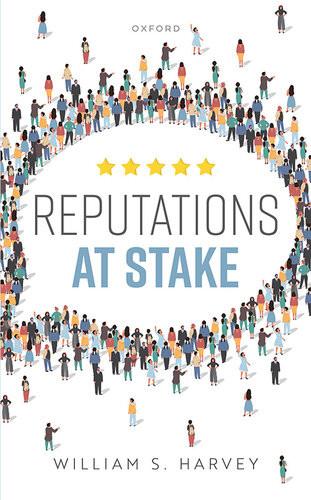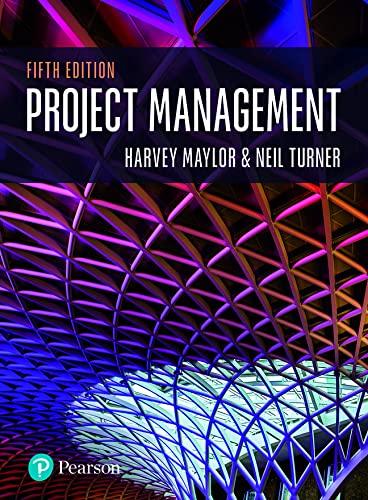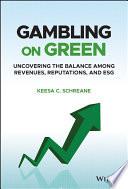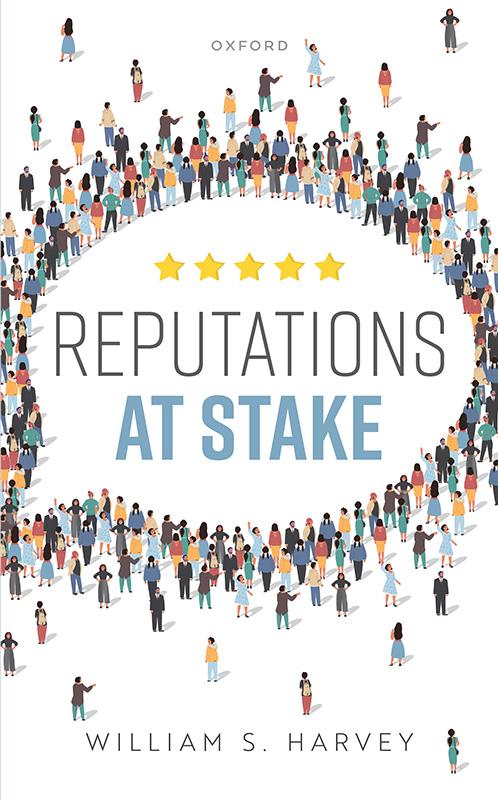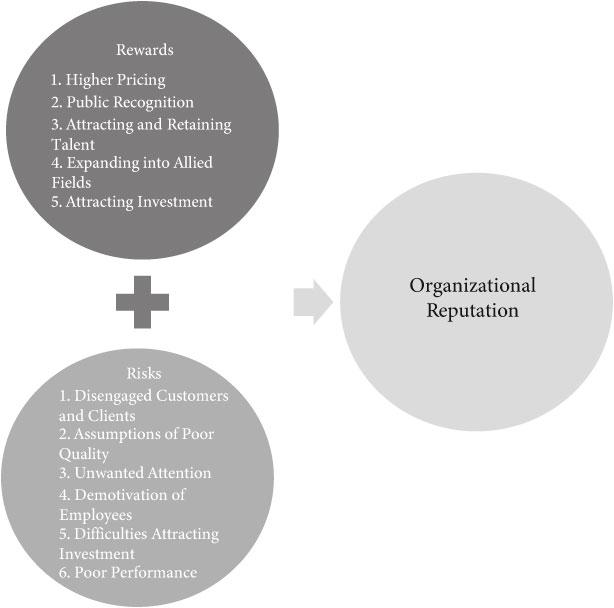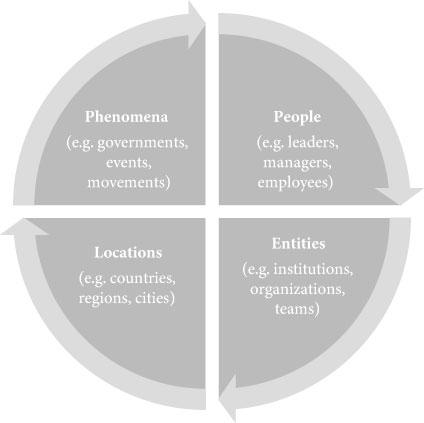Reputations at Stake
WILLIAM S. HARVEY
Great Clarendon Street, Oxford, OX2 6DP, United Kingdom
Oxford University Press is a department of the University of Oxford. It furthers the University’s objective of excellence in research, scholarship, and education by publishing worldwide. Oxford is a registered trade mark of Oxford University Press in the UK and in certain other countries
© William S. Harvey 2023
The moral rights of the author have been asserted
All rights reserved. No part of this publication may be reproduced, stored in a retrieval system, or transmitted, in any form or by any means, without the prior permission in writing of Oxford University Press, or as expressly permitted by law, by licence or under terms agreed with the appropriate reprographics rights organization. Enquiries concerning reproduction outside the scope of the above should be sent to the Rights Department, Oxford University Press, at the address above
You must not circulate this work in any other form and you must impose this same condition on any acquirer
Published in the United States of America by Oxford University Press 198 Madison Avenue, New York, NY 10016, United States of America
British Library Cataloguing in Publication Data
Data available
Library of Congress Control Number: 2022948739
ISBN 978–0–19–288652–1
DOI: 10.1093/oso/9780192886521.001.0001
Printed and bound in the UK by Clays Ltd, Elcograf S.p.A.
Links to third party websites are provided by Oxford in good faith and for information only. Oxford disclaims any responsibility for the materials contained in any third party website referenced in this work.
Contents
Acknowledgements
1. Reputation Matters
Diagram 1.1: The Rewards and Risks that Reputation Brings to Organizations
Reputation Forms at Many Levels
Individual Level
Team Level
Organization Level
Regional Level
Country Level
Phenomena Level
Environment
Social Movements
Health
Technology
Diagram 1.2: The Multiple Levels of Reputation
2. Reputation: What It Means and Where It’s Made What Is Reputation?
Table 2.1: Theories and Perspectives of Reputation
Reputation and Its Fragility
Table 2.2: Unpacking My Definition of Reputation How Multiple Reputations Impact our Lives
3. Reputation and Power: How Reputation Is Built, Maintained, and Subject to Threat
How Did You Decide Who to Vote For?
Who Are the Electorate Voting For?
Stakeholder Capitalism and Stakeholder Theory
Diagram 3.1: An Inside-Out Approach to Stakeholders
Diagram 3.2: An Outside-In Approach to Stakeholders
Existential Threats
Intermediaries
Diagram 3.3: Past and Present Comparisons of Information, Media Stories, and Reputations
Diagram 3.4: The Causes, Realities, and Outcomes of Reputation
4. How Migration Affects the Reputations of Countries and Cities
Reputation of Places
Diagram 4.1: Multiple Reputations that Inform Migration Choices
Intermediaries Connecting Skilled Migrants With Countries
Labour Market Reputation
Return Migration and Brain Circulation
Diagram 4.2: The Importance of Reputation for Home and Host Countries
5. The Global Scale of Reputation and Crisis Management Across Multiple Borders
Multiple Reputations Across Borders
Diagram 5.1: The Multiple Reputations of PromCon
Social Media Reputations: The Dark Side
Social Influencers and the Spotlight They Shine on Reputations
Cross-border Crises
6. Maintaining Positive Reputations Amid Corruption and Competing Stakeholders
Navigating Corruption and the Needs of Competing Stakeholders: Lessons from Econet in Zimbabwe and Alacrity in India
Diagram 6.1: Four Types of Stakeholder Positions to Ethical Behaviour
Navigating the Needs of Competing Stakeholders: Lessons from Rio Tinto in Madagascar
Navigating the Needs of Competing Stakeholders: Lessons from Libraries Unlimited
Diagram 6.2: Location of Fifty-four Libraries of Libraries Unlimited
Diagram 6.3: Libraries Unlimited Stakeholders
Table 6.1: Libraries Unlimited Mission and Six Core Purposes
Table 6.2: Terminology when Formulating a Strategy at Libraries Unlimited
Diagram 6.4: Five Core Objectives
Table 6.3: Stakeholder Quotations
A Summary of Navigating Competing Stakeholders
7. Aligning Purpose and Values
Diagram 7.1: Misalignment of Society, Purpose, and Values
Purpose
Diagram 7.2: Excerpt From the Business Roundtable’s (2019) Statement on the Purpose of a Corporation
Business Action on Purpose
Diagram 7.3: Five Examples of Business Action on Purpose
Organizational Values and How They Can Be Internalized Within Organizations
Creating Values in HKL
Diagram 7.4: Alignment of Purpose, Values, and Identities
Diagram 7.5: Internalizing Values Through Leaders, Managers, and Employees
8. Responding to Threats
Reputation and Identity Conflict in Management Consulting
Table 8.1: Types of Identity-reputation Gaps and Responses
Diagram 8.1: Reducing the Gap Between Identity Claims and Reputation
Leadership and Cultural Change in Meat Processing
9. Doing Well by Doing Good
Surfwell: Health and Wellbeing Within Devon and Cornwall Police
Diagram 9.1: Surfwell
How Does Doing Good Make an Organization Do Well?
Pivoting During a Global Financial Crisis in Executive Recruitment
Diagram 9.2: Managing Reputation in Response to Common Threats
The Konyaks of Nagaland: Compassion Among Headhunters
Diagram 9.3: Balancing Toughness and Kindness
Daoist Nothingness: SME Leaders in China
10. The Growing Threat of Professional Misconduct
Background on the Prison Project
What Causes People to Commit Professional Misconduct?
Diagram 10.1: Individual Triggers of Professional Misconduct
Individual Triggers
Organizational Context
Diagram 10.2: Organizational Context Drivers of Professional Misconduct
Environmental Milieu
Diagram 10.3: Environmental Milieu Drivers of Professional Misconduct
Diagram 10.4: Professional Misconduct: An Outcome of the Layering of Individual, Organizational, and Environmental Factors
Layering of Individual, Organizational, and Environmental Factors
11. Recovering From Reputation Damage
How Inmates Are Planning their Recovery
Diagram 11.1: Three Overlapping Phases of Recovery
Phase 1: Despondency and Loss of Identity
Phase 2: Acceptance, Self-Realization, and Transition
Phase 3: Thinking and Planning Recovery
The Way You Fall Affects How You Climb
Diagram 11.2: How Process, Prominence, and Proximity can Improve or Worsen Recovery From Reputation Loss
Contribution Is the Most Important Anchor to Climb
What Can We Learn From Inmates About Recovering From Reputation Damage
12. Concluding Remarks
Recap
Reputations at Stake
What Can We Do? Some Cautionary Recommendations
Diagram 12.1: Cautionary Recommendations
References
Index
1 Reputation Matters
Does reputation impact what you do? As children, how we perform in exams or interact with our peers affects how others perceive us. As adults, our success at applying for jobs or promotions is impacted by evaluations and judgements that others make of us. What we wear and own, what we say, who we interact with, where we work, what clubs we belong to, what we do with our time, and how we present ourselves in the real and virtual world all influence the perceptions that others have of us. Some people also reflect on and talk about their legacy, indicating that reputation can remain important long after death.
Years of research have revealed how reputation is formed, its importance and its fragility. On these pages, through a range of global examples across many sectors, you will come to understand why reputation matters, what threatens reputation, and what steps can be taken to mitigate reputation damage.
Reputation is not only something that we need to think about as individuals, but also in relation to our organizations, whether we are leaders, managers, or employees. I hear you say: ‘Why should I care about reputation when I am not responsible for or paid to worry about such strategic issues?’ My answer is that as an employee your collective actions and behaviours have an impact on the perceptions of the quality of the product or service that you are delivering. If this
is perceived as excellent, then your organization will have a strong platform from which it can be financially sound and meet the needs of different stakeholders. It will also increase the likelihood of repeat purchases, further investment, and other good employees wanting to work for your organization. An ambivalence or disinterest in your organization’s reputation means you are unlikely to influence the direction of your organization. Therefore you will gain limited meaning from your work, which will affect how others perceive you and your organization, and this could undermine its financial performance and the engagement and satisfaction of a wide group of stakeholders. At best, this might lower performance and morale within your organization; at worst it could undermine its sustenance and lead to you and your colleagues being laid off. Reputation is at stake for all of us because it swings both ways, bringing both risks and rewards.
Let us begin by looking at reputation as a valuable intangible currency that allows organizations to accrue many rewards (Rindova et al., 2010) (see Diagram 1.1).
Diagram 1.1 The Rewards and Risks that Reputation Brings to Organizations
Reputation allows organizations to accrue rewards in five main ways:
1. Higher Pricing. Organizations with positive reputations can charge higher prices for their products and services. Think, for example, of what Apple Inc. charges its customers for an iPhone compared to other smartphone providers; or what
McKinsey & Company bills its clients compared to other management consulting firms.
2. Public Recognition. Organizations with positive reputations start to gain public recognition, for example in mass and social media. The Global RepTrak® 100 provides a reputation ranking for the world’s leading companies, which in 2021 rated the LEGO Group as number one, followed by Rolex and Ferrari. These are all prominent organizations who tend to receive significant public attention.
3. Attracting and Retaining Talent. Those who have positive reputations can both attract and retain talent, which provides them with a strategic advantage in the labour market compared to their competitors. There are many notable media organizations that provide such rankings: Fortune’s 100 Best Companies to Work For rated Cisco, Salesforce, and Hilton as the three top companies in 2021. Such rankings inform how different stakeholders perceive organizations, as well as decisions around applying for and remaining with employers.
4. Expanding into Allied Fields. Once organizations have built an established reputation for something, it enables them to expand into allied fields. It is worth reflecting on how Amazon.com, Inc. started out in 1994 as an online bookseller and has subsequently expanded into a multi-billion-dollar multinational technology firm focusing on e-commerce, cloud computing, digital streaming, and artificial intelligence.
5. Attracting Investment. Organizations with positive reputations can attract investment from a variety of sources such as venture capitalists and shareholders, helping them to grow.
But reputation also has a downside and presents major risks for organizations too. There are six major risks associated with negative reputations:
1. Disengaged Customers and Clients. A negative reputation can disengage customers and clients. In 1991, Gerald Ratner, the CEO of a British jewellery company, gave a speech at the Royal
Albert Hall in London, in which he jokingly said that its products could be sold at such a low price ‘because it’s total crap’. Following the speech, £500 million was knocked off the firm’s value and it very nearly collapsed. This lack of consideration for the customer gave rise to the expression ‘doing a Ratner’.
2. Assumptions of Poor Quality. Negative reputations lead to assumptions of poor quality. A low average rating on Booking.com, for example, will negatively impact on the perceptions of the hotel among customers, which in turn will inform their purchasing decisions.
3. Unwanted Attention. Negative reputations bring unwanted attention in the mass media, social media, and in face-to-face networks. Consider, for example, all the negative media attention that Prince Andrew’s sexual assault lawsuit brought to the British Royal Family.
4. Demotivation of Employees. Negative reputations demotivate employees and affect the ability for organizations to attract new and retain existing employees. Not surprisingly, potential and existing employees do not want an organization’s negative reputation having a contagion effect on their identities (who we are) and their own reputations (what do others think of us) (Brown et al., 2006).
5. Difficulties attracting investment. Poor reputations create difficulties for attracting investment, whether that is a founder starting a business or a leader seeking to expand a business.
6. Poor Performance. Negative reputations lead to poor performance, as BP plc found with the Gulf of Mexico oil spill and the Volkswagen Group found in light of its emission scandal. In some cases, such as Enron, a sustained or extreme negative reputation event (e.g. large accounting fraud) can lead to the demise of an organization.
Reputation Forms at Many Levels
Reputations are formed and held at various levels.
Individual Level
At the individual level reputation has an impact on how we are perceived within business and society. When we write a cover letter for a job, share our CV, or write on LinkedIn, this is about trying to create an intended image: what we want others to think about us. But this is not the same as reputation, which is what others actually think of us (Brown et al., 2006). Therefore, employers will use additional methods to form an impression of job candidates, including word of mouth, references, and assessments. Reputation continues to be important for us within organizations because how we are perceived by managers will impact on how we are appraised and therefore our salary, promotion potential, and wider esteem within the organization.
The reputation stakes are often even higher for founders and leaders when they are considered the figurehead of the organization, meaning that different stakeholders within and outside of the organization pay careful attention to their actions and behaviours. Elon Musk, the Founder and CEO of Tesla, for example, gains major attention across mass and social media when he makes any public statements, which not only impacts on his own reputation but also on the reputation of Tesla itself. The actor Will Smith captured unwanted attention at the 94th Academy Awards in 2022 when he stormed the stage and slapped comedian Chris Rock for making an offensive joke about Smith’s wife. Minutes later Smith was walking onto the same stage to receive the award for Best Actor for his performance in King Richard, which was a jarring contrast from his earlier outburst.
Reputation is also highly relevant for individuals within society. This is a double-edge sword, as individuals can be held in high-
esteem in villages, towns, and cities for their contributions to the community, but can also find themselves stigmatized and socially ostracized if they are perceived negatively. Walking this knife edge is not only something that we as adults need to be mindful of—it is also vital to educate our children about it, particularly given how perceptions are formed in person as well as online, for example through social media, gaming, and the metaverse where the boundaries between virtual and reality become blurred. Our actions online can be long-lasting, and may inform how others perceive us many years later.
While some might shun the idea of caring about one’s reputation and letting it affect their life choices (particularly when happiness might be at stake), whether we like it or not it is important for us to consider because it has a ripple effect on what we do and where we go.
Team Level
Reputations are also formed in teams. Within large investment banks, law firms, or management consultancies, although the organization may have prominent reputations (e.g. JP Morgan, Baker McKenzie, or McKinsey and Company), it can also be the department or team that attracts talent. This is as true in financial and professional services as it is in sports, music, and film. For example, while the reputation of the New England Patriots, an Andrew Lloyd Webber West End show, or a Stephen Spielberg production will be highly important in influencing perceptions among different groups, the team and their reputation is essential for influencing the organization’s reputation as well as the reputation of individuals, whether that is a chair, CEO, sports coach, composer, or film director.
Organization Level
Organizational reputation is a well-established field of literature (Fombrun, 1996; Roberts and Dowling, 2002; Rindova et al., 2005; Lange et al., 2011; Ravasi et al., 2018; Bustos, 2021) and there are a wealth of reputation rankings for organizations (e.g. Fortune’s Most Admired Companies, The Times Higher Education World Reputation Rankings and Vault’s Best Companies to Work For). As I discussed earlier, there are rewards for positive reputations but risks of reputation damage, which is why it is a strategic imperative that needs careful oversight and management by board members and executives. The Deepwater Horizon explosion and oil spill in the Gulf of Mexico in 2010, for example, led to eleven deaths and the largest marine oil spill to date. This event rapidly escalated into a major reputation disaster for BP; it led to federal criminal charges of manslaughter, the replacing of the CEO, around $65 billion in costs, charges, and penalties, and it took many years for the company’s share price to recover.
Organizations can also impact their reputation through social advocacy. Ben and Jerry’s long-term advocacy of lesbian, gay, bisexual, transgender, and queer (LGBTQ+) justice issues through social media has been perceived as a good fit between its identity and the issues that it has been advocating (Lim and Young, 2021). This has had a positive impact on Ben and Jerry’s reputation; however it would have had a different outcome for their reputation had the company been seen as opportunistic rather than authentic in its advocacy. Conceptually, we should distinguish between advocacy related to promoting social issues when organizations are authentically expressing their views and acting on issues such as diversity and inclusion or climate change, and advocacy related to promoting the business when organizations are leveraging their customers or procuring intermediaries such as influencers to extend their brand awareness. These two forms of advocacy can sometimes
be conflated when organizations seek to promote social or environmental causes owing to business opportunism rather than because such actions align to their purpose.
Regional Level
Regional reputation arises when cities or places influence the choices of different stakeholders, for example as a travel destination for tourists, an environment for investors, or a location to live for employees. Saxenian (2007), for example, referred to the important draw of Silicon Valley as a region for aspiring engineers in the information and communications technology sector, which has been argued elsewhere in the contexts of financial services in Singapore (Beaverstock, 2002), scientists in Boston (Harvey, 2011a), and tourism in Dubai (Dutt and Ninov, 2016), to name only a few examples. Michael Porter (2000) has highlighted the importance of location for competitive advantage, and Richard Florida’s (2005) work on the creative class (from engineers, scientists, and designers to entrepreneurs, lawyers, and programmers) argues that talent plays an essential role in economies, regions, workplaces, and societies. How places create the right infrastructure, services, and environment to attract and retain talent has major implications for the subsequent success of the region. Hence the reputation of the destination, whether that is Silicon Valley or Shanghai, will have an impact on flows of talent (Harvey et al., 2018).
Country Level
TheEconomist’s liveability survey of cities and HSBC’s expat explorer survey of countries are just two of many prominent ranking systems that influence the reputation of places which impact on travel and
relocation choices. This is not to mention the countless articles published in newspapers and magazines, or the even larger volume of television, film, and social media coverage of cities and countries that shape the reputation of places. Despite the costs, many cities are keen to host major events such as the Olympics or the FIFA World Cup because they draw significant attention to a city and country, which can inform trade, travel, investment, and mobility choices. However, the reputation of places is not always plain sailing. In 2022, for example, the UK and particularly London came under severe criticism during the Russia-Ukrainian war for being a place of money laundering. TheEconomistproduced a short documentary on so called ‘Londongrad’, asking why it is so easy to hide dirty money in Britain (TheEconomist, 2022).
Phenomena Level
The final form of reputation is opaquer because it does not relate to any scale of analysis, but instead refers to an event or movement. Phenomena level reputation stems from important, remarkable, or unprecedented events, states, movements, or situations: it could relate to political events such as the geopolitical tensions and war between Russia and Ukraine, the heated US Presidential elections of 2020, or the narrow UK referendum vote to leave the European Union in 2016. It could also relate to an economic, environmental, health, or social phenomenon.
Phenomena level reputation has become particularly pressing in the last few years given the rise of ‘stakeholder capitalism’ (also referred to as stakeholderism)—a form of capitalism in which companies are not seduced by short-term profits for shareholders, but seek long-term value creation by considering the needs of all their stakeholders and society at large (Schwab and Vanham, 2021b). Economically, this has become a burgeoning discussion
point in Western countries. In 2019, the Business Roundtable, an influential body that represents 181 of the largest companies in the United States, modified its guiding principle on the purpose of the corporation, shifting away from shareholder primacy, which was advocated by the likes of the American economist Milton Friedman and the former CEO of General Electric, Jack Welch, to a broader commitment to all its stakeholders. The British Academy (2018) has taken a similar position in its report ‘Reforming Business for the 21st Century’, which argues that the purpose of the corporation should come first before profit (see also Mayer, 2020).
Stakeholder capitalism is not merely an academic concept (Hill and Jones, 1992; Freeman et al., 2010) with limited practical relevance, or a business fad with no legitimate evidence base (Schwab and Vanham, 2021b). There are countless branches of this phenomenon that show how the reputation of stakeholder capitalism is gaining legitimacy among different groups, from corporate social responsibility (Smith, 2003), the triple bottom line (Elkington, 1997), Certified B Corporations (B Corporation, 2021), the United Nations’ 17 Sustainable Development Goals (UN, 2021), sustainable finance (Schoenmaker and Schramade, 2019), and the circular economy movement (Ellen MacArthur Foundation, 2021) to name only a few examples.
Environment
Many of the examples that relate to stakeholder capitalism connect with the environment, which is another phenomenon that divides perceptions. Think, for example, of the tensions between the enormous body of scientific data around the human impact of climate change, and groups and organizations who reject climate change. Often such groups communicate and engage within echo chambers, which creates division around climate change among the
wider population. The UN’s annual Conference of the Parties (COP) has led to increasing political consensus at a global level around communications and emissions commitments since the first COP meeting in Berlin in 1995. However, the reputation of environmental phenomena such as climate change, biodiversity depletion, air, and water quality are perceived very differently among various groups, often depending on their vested interests, economic status, political power, and geographic location. Unfortunately, those who are most severely impacted around the world (i.e. the poorest) often are the most limited in their ability to instigate changes in perception because of their lack of voice. The Extinction Rebellion is an example of a global environmental movement that attempts to challenge this by subjecting themselves to significant reputation damage through their civil disobedience in the pursuit of pushing governments to avoid climate tipping points (Lenton et al., 2019).
What is concerning is that our impact on the environment is already extending into space up to and beyond 100 miles above the earth’s surface, which is the lowest altitude at which satellites can maintain orbits for a reasonable time. The National Aeronautics and Space Administration (NASA) estimates that there are more than 27,000 pieces of space junk. This orbital debris is tracked by the Department of Defense’s global Space Surveillance Network sensors (NASA, 2021). This excludes a much larger volume of debris that is too small to be tracked. It is estimated that there are around 900,000 pieces between 1 and 10 centimetres in length and potentially 128 million pieces that are at least 1 millimetre in length (The Economist, 2021c). Travelling at around 15,700 mph in low orbits, much of this orbital debris could cause major damage to human and robotic spacecrafts. This is another example of tension between the demands of governments, organizations, and people to have fast internet and the wider impact this has on the environment. In the words of Jonathan McDowell, an astrophysicist at the
Harvard-Smithsonian Center for Astrophysics (TheEconomist, 2021c: np):
Every time humanity moves into a new domain the oceans or the air or space we go, ‘Wow, this is enormous and really empty, we can throw as much garbage here as we want, and it’ll never fill up, right?’ Then pretty soon we go, ‘Oops, that wasn’t quite true.’ And we’re reaching that point in space.
Social Movements
Social examples of reputations that relate to phenomena are also highly prevalent. The #MeToo movement was a social campaign against sexual abuse and sexual harassment, with the purpose of empowering, through empathy and solidarity, people who have been sexually assaulted. The Black Lives Matter movement focused on advocating against police violence towards Black people. The Occupy Wall Street movement protested economic inequality and began in the financial district of Wall Street in New York City. These are all examples of the mobility of social groups around issues that were considered pressing for societies. The reputation of such phenomena among a wider set of stakeholders is important for determining their momentum. Connecting with wider groups helps to increase attention, improve the flow of resources, and provide a stronger mandate for change, whereas alienating stakeholders can undermine the legitimacy of a movement and the ability to instigate change.
Health
There are also health examples of how reputations relate to phenomena. For example, there were different perceptions within and between countries around the seriousness of the 2020–2022 coronavirus pandemic. Even when there was strong consensus—due
to the number of deaths and the high volume of hospital admissions —that COVID-19 was a virus that required serious attention by everyone, many governments have since been criticized for their complacency. Within those countries in the privileged position to vaccinate, there has generally been a strong uptake by populations. But there have also been large segments of the population, including prominent individuals such as the Serbian professional and world number one ranked tennis player Novak Djokovic, who have been sceptical about vaccines, despite compelling scientific data. Hence, the reputation of phenomena such as COVID-19 impacts on the policies and behaviours of different groups, which in turn influences outcomes such as positive cases, hospital admissions, and deaths.
Technology
Finally, there are technological illustrations of the reputations of phenomena. The volatility around the value and application of cryptocurrencies, for example, has divided opinion among investor winners and losers. Other examples include how technology firms use data for commercial purposes and who should own the data, or how technological firms who operate across multiple geographic locations should pay tax. A further example concerns the uncertain future of the metaverse and how humans interact with and present themselves, which literally blurs the boundary between the real and virtual worlds, with uncertain reputation consequences.
These examples illustrate how reputation does not necessarily reside in a country, region, organization, or individual, but within the phenomenon. This reputation is important because it influences new policy, the emergence of markets, and shifts in behaviour.
In summary, reputation envelops everything that we do and operates at multiple levels (see Diagram 1.2), from people and entities to locations and phenomena. Now that we have identified
the rewards, risks, and multiple levels of reputation, let’s clarify what reputation means and how it impacts us.
Diagram 1.2 The Multiple Levels of Reputation
2 Reputation
What It Means and Where It’s Made
What Is Reputation?
Now that the risks and rewards of reputation have been set out, let us look to what is meant by reputation and how it impacts our daily lives. Reputation has been defined and framed in many ways by many people.1 I define reputation as:
The multiple perceptions of an entity made by different stakeholders, based on their evaluations of the past capabilities and character of the entity, and their assessment of its ability to provide future contributions.
How I have come to define it in this way is a result of the work of many others in this field. Fombrun (1996, 2012), for example, has argued that there are three important attributes of reputation: collective assessment; specific to a set of stakeholders; relative to a reference group. Walker (2010) extended these attributes further, suggesting that reputation can be positive or negative, and stable and enduring.
It is broadly agreed that reputation is a collective evaluation of an entity, which could range from a country, organization, team, or individual. That evaluation stems from a group of stakeholders (Dowling, 2016) who are forming perceptions based on past
activities and expectations around future behaviour (Harvey et al., 2020).
Capability and character have also been documented as key aspects of reputation (Mishina et al., 2012; Waller and Younger, 2017; Park and Rogan, 2019). While capability reputations focus on quality and performance (which could include, for example, the financial performance of an investment bank), character reputations focus on incentive structures and behavioural tendencies (such as cases of professional misconduct) (Mishina et al., 2012: 460).
Reputation has been defined from multiple theoretical perspectives, including institutional theory, agenda-setting theory, stakeholder theory, signalling and impression theory, identity theory, resource-based theory, and social construction theory (Fombrun, 2012: 96). I do not detail them here because these have been covered extensively and it is not the focus of this book, but I do provide more details in the footnote for those of you who would like more information. An alternative way to understand reputation is through seven theories and six perspectives, presented by Fombrun (2012)2 and Ravasi et al. (2018) respectively,3 in Table 2.1.
Table
2.1
Theories and Perspectives of Reputation
Seven ways of theorizing reputation: 96–98)
Institutional Theory
Agenda-Setting Theory
Stakeholder Theory
Signalling and Impression
Theory
Identity Theory
Resource-Based Theory
Social Construction Theory
Six perspectives of reputation (Ravasi et al., 2018: 575–582)
Game-Theoretic
Strategic
Macro-Cognitive
Micro-Cognitive
Cultural-Sociological
Communicative
My definition of reputation builds on this literature and my own previous definition of organizational reputation (Harvey, 2021a). To help clarify my definition, I summarize some of its key terms in Table 2.2.
Reputation and Its Fragility
A central premise of this book, highlighted in the title, is that reputations are at stake everywhere. I use the term ‘at stake’ for two purposes. First, to show the risk reputation can present. At the time of writing, the 27-year-old international England cricket player Ollie Robinson was suspended by the England and Wales Cricket Board for offensive tweets he made a decade ago as a teenager, leading to an intervention by the UK Prime Minister, Boris Johnson. This demonstrates how past actions, even from years ago, can undermine one’s reputation. A few months later, a major scandal hit English cricket with Pakistan-born Azeem Rafiq breaking down in tears in front of UK members of Parliament as he outlined the racism, bullying, and inhumane treatment he faced while playing cricket for Yorkshire that impacted on his career and almost led to him taking his own life. Here the example shows that the experience of an individual can significantly impact the reputation of a club, a community, an organization, and a sport practised all around the globe.
Table
2.2 Unpacking My Definition of Reputation
Key Terms Explanation
Multiple perceptions Recognizes that reputation is based on perceptions rather than facts and that stakeholders vary in what they think.
